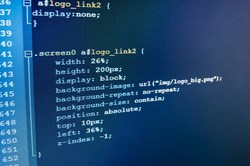AI ethics - What's possible, probable and preferred?
The development and ubiquity of Artificial Intelligence raise a number of social and ethical matters that students can explore in the Digital Technologies classroom. This lesson idea outlines a project to help students frame such discussions using the curriculum Key Idea of Creating preferred futures, tying into Critical and Creative Thinking.
Additional details
| Year band(s) | 9-10 |
|---|---|
| Content type | Lesson ideas |
| Format | Web page |
| Core and overarching concepts | Impact and interactions |
| Australian Curriculum Digital Technologies code(s) |
AC9TDI10P10
Evaluate existing and student solutions against the design criteria, user stories, possible future impact and opportunities for enterprise
AC9TDI10P11
Select and use emerging digital tools and advanced features to create and communicate interactive content for a diverse audience |
| Technologies & Programming Languages | Artificial Intelligence |
| Keywords | Artificial Intelligence, AI, artificial, intelligence, teachable machine, smart phone, algorithms, problem solving, Lesson idea, Lesson plan, home automation, Roseville college, ethics, moral machine |
| Integrated, cross-curriculum, special needs | Digital Literacy |
| Organisation | ESA |
| Copyright | Creative Commons Attribution 4.0, unless otherwise indicated. |
Related resources
-

A matter of style
In this lesson sequence, students using the Zen Garden website reflect on criteria for effective design.
-

Design and deliver
In this lesson sequence students create a website that acts as a showcase for a portfolio of their digital work.
-

Seven seasons
In this lesson sequence students investigate the CSIRO indigenous seasons calendars and produce a searchable database that will capture data using two data sources.
-

The shock of the new
Using four inventions from 1985, this lesson sequence explores the impact of innovation, supporting circumstances, how individuals contribute to change and the importance of addressing benefits as well as risks in the development of new systems.
